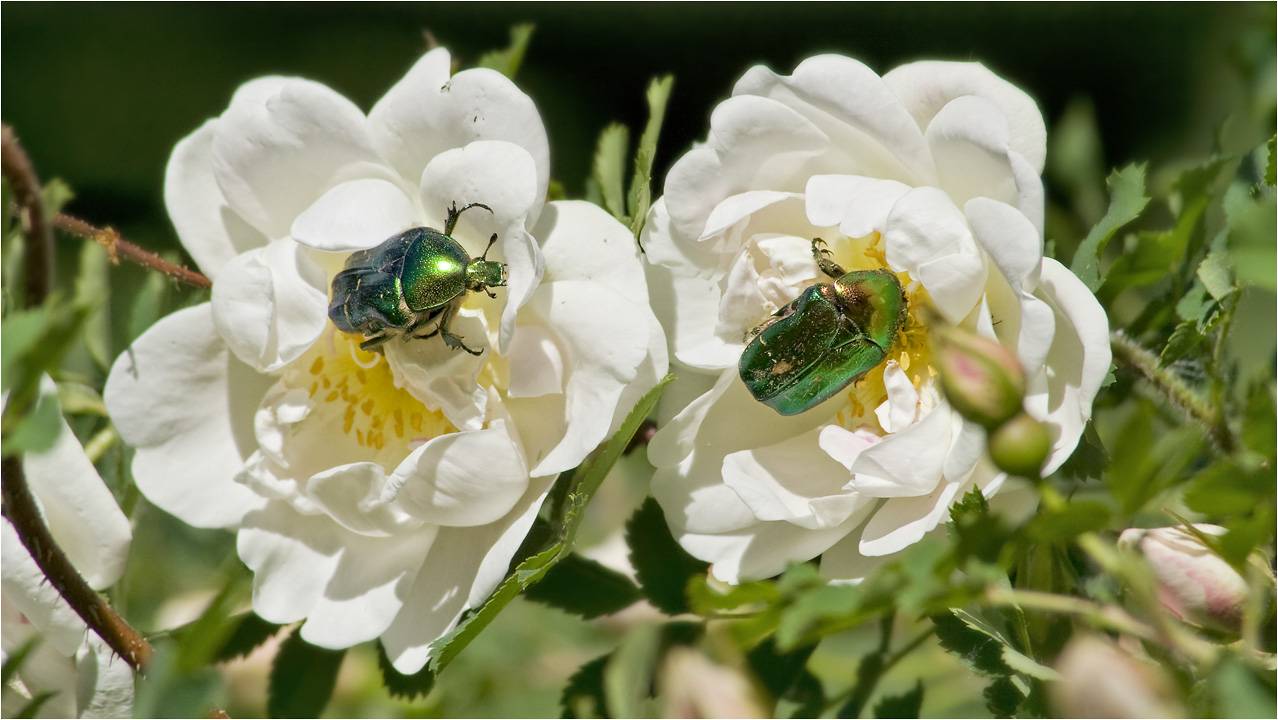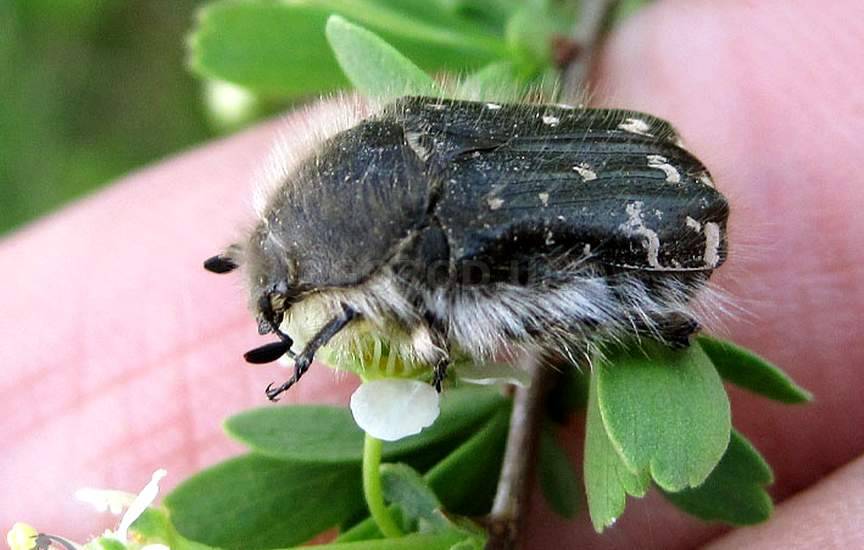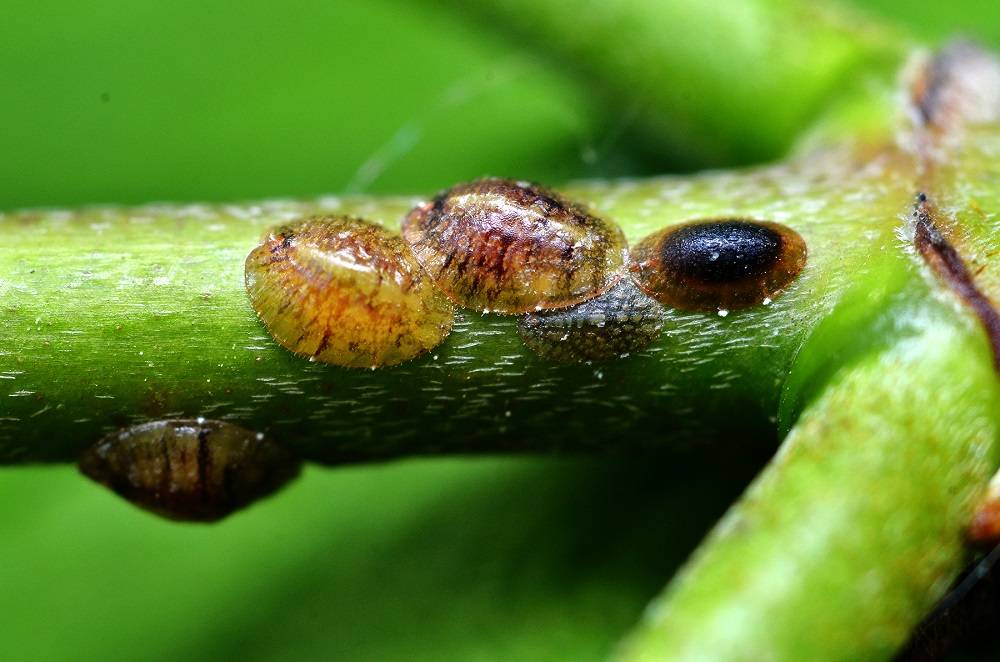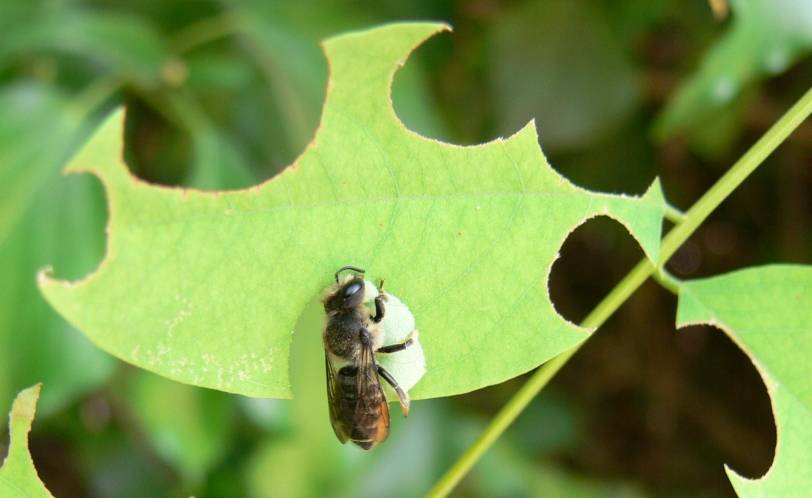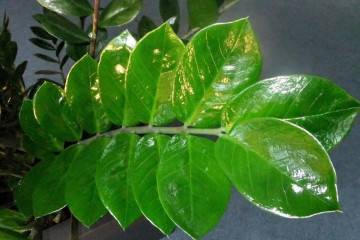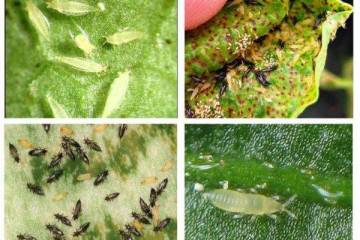Rose pests and control - how to get rid of
Content:
Since ancient times, the rose has been considered the queen of flowers. It is difficult to find a person who would not admire its decorative qualities and delicate, delicate aroma. However, few decide to grow it in their garden plots. And this is not always the reason for this is the difficulty in caring for the flower. More frequent problems faced by every second grower are pests of roses.
Insects on roses: how they can harm, who eats leaves and buds
Pest insects are very dangerous for delicate rose buds. If you do not take measures to combat them in a timely manner, then the flowers may die. It is known that it is better to prevent than to eliminate, but this is not always possible to do. Therefore, flower growers who decide to breed these flowers have to learn how to deal with them. There are many answers to the question of what to do if green bugs and midges appear on the roses. It is necessary to decide what kind of insect is causing damage to a beautiful flower.
Before you start fighting insects and treating plants with chemicals, you should take measures for your own safety - wear rubber gloves and a respirator.
What to do if pests appear
What to do if green or other colored bugs appear on the roses? As soon as this has happened, it is necessary to begin an active struggle. Even when it seems like it’s too late, the flower can be saved in most cases. Traditional methods are more suitable as a prophylaxis or for mild infection. If things have gone far, active chemicals must definitely enter the fight. Only they will help restore the flower.
Most pests feed on the cell sap of the rose, and therefore are distributed on the leaves and young stems. These parts are the easiest to pierce and the juicest. The next danger zone is rose buds and flowers. The roots are the last to suffer, but it is their damage that is most dangerous for the plant. If the root system is severely damaged, the flower may die.
Gnawing pests of roses and the fight against them
As soon as the growing season begins, insects attack the roses. They slow down the growth and development of the plant, devour buds and buds. Most often, they feed on the sap of flowers, gnawing the stem and leaves or piercing them. These can be not only adult insects, but also their larvae and adults. Therefore, often among gardeners, especially beginners, the question arises: there are green insects on the rose, what to do? First of all, you need to determine who exactly decided to feast on the flower.
Drooling penny, or omnivorous leafhopper
A slobbering penny envelops itself in frothy saliva, inside which it grows and develops, sucking juice from pink stems and leaves. The places of their dislocation are the axils and the underside of the leaves. Adult yellow-gray insects are extremely mobile. After hatching, the larvae jump out of their cocoon and hide. To overcome them, you will need to spray not only the roses themselves, but also the nearby plants, as well as the soil around them, with chemicals 3 times.The interval between treatments should be about 10-12 days.
Rose leafhopper
Rose leafhoppers are beetles on roses that can lead to the death of a plant overnight. They feed on the sap of the flower and can harm not only roses, but all plants in the area. They multiply extremely quickly - 2-3 generations appear during the season. Insect Description:
- the larvae are small white, almost static;
- location - the bottom of the sheet;
- the adult leafhopper is white or yellowish, the body is elongated;
- the mobility of adult insects is very high, as soon as someone outside touches the leaf, they immediately jump from it to a new place.
Rose aphid
This insect is considered one of the most dangerous, because it multiplies very quickly, and it is difficult to notice it at the very beginning, since it settles on the underside of the leaf, on young stems or buds. This is just one of the varieties of green beetles on roses.
The larvae grow and develop very quickly and from the very birth they are able to suck the sap of the plant. Roses damaged by aphids curl, dry out, the buds either do not develop at all, or take strange, ugly forms.
An inseparable connection is maintained by aphids with ants, they have a mutually beneficial cooperation. Therefore, if there is an anthill next to the flowers, then it is better to destroy it. Ants themselves are capable of damaging flowers, but they guard the aphid colony and even transfer these pests to a new place where the parasites have not yet had time to settle.
To overcome rosacea aphids, it is necessary in early spring at the very beginning of vegetative development, even before the buds swell, to treat the bushes with contact insecticides. The most popular and effective remedies:
- commander;
- spark;
- inta-vir;
- tanrek.
In summer, they are treated with other insecticides:
- karbofos;
- rogor;
- metathione;
- antio.
The use of other drugs is possible. Experienced growers already know what is right for their garden.
To combat rosacea aphids, folk remedies can also be used. To prepare a solution for treatment, you will need:
- 300 g of garlic;
- 400 g of tomato leaves;
- 50 g of laundry soap 72%;
- water.
This amount of ingredients is based on a 3 liter can. First, crushed garlic, crushed leaves and soap are placed in it. The jar is filled with water and infused for 6 hours in a warm place. The contents are filtered with gauze and brought to a volume of 10 liters. Spraying with a product is carried out weekly. With its help, you can defeat not only aphids, but also many other parasites.
Rose sawfly caterpillars
This type of insect feeds exclusively on the cell sap of green plants. This is possible thanks to his piercing-sucking mouth apparatus, with which he first pierces and then sucks out the juice. As a result of this effect, the plant stops developing, turns yellow, curls and eventually dies.
Leaf rollers
Leaf rollers are divided into 2 categories: fruit and rosaceous. Unfortunately, roses can suffer from both. Rosaceae appear at the very beginning of spring, killing buds that are just beginning to wake up. Fruiting begins to hunt for flowers towards the end of May. They devour young stems and leaves. If there are few pests, they are collected mechanically and killed.
As a preventive measure, in the spring, it is worth sprinkling the bushes with any specialized agent.If green insects appear on rosebuds, you can get rid of them both with a folk remedy and with any insecticide. Flower growers adhering to traditional methods of struggle, sprinkle the leaves of the rose with mustard powder, this also helps in the fight against aphids. But this method is still recommended to be used as a prophylactic or combined with chemicals.
Rose sawflies
There are 2 types of rose sawflies: white-belted and descending. The second one is more common. Its larvae are able to overwinter in the soil, and pupate in spring, later turning into an adult.
Description of the parasite:
- body length up to 7 mm;
- the back is black, shiny, the wings are dark, the paws are black with yellow tibiae.
Females lay eggs at the tops of young stems. The larvae gnaw shoots, penetrate inside to a depth of 5 cm and develop already inside the stem. It darkens and dries. Dealing with them is not easy because they are not visible.
How to deal with beetles
Bronze and deer are dangerous for roses, since they completely eat up all parts of the flower. They are active throughout the summer season from mid August to late September. Bronze is a medium-sized beetle (1.5-2 cm) of golden-green color. A deer is a black beetle whose body is covered with villi. Its size is 0.8-1.4 cm. These pests will have to be picked by hand in the early morning, when they sit quietly on flowers and feed on the most delicious parts. After collecting, the beetles are burned, and the bushes are sprinkled with mustard, this remedy will protect against many pests.
To prevent the beetles from flying up and trying to eat the roses, you can cover the rose garden with a fine mesh. However, it is best to do this if the flowers are grown to create bouquets. On the site, the plants covered with a net do not look very decorative.
How to deal with other pests
Other insect pests that parasitize not only these beautiful flowers, but also many other garden plants are no less dangerous for roses.
Spider mite
Spider mites are extremely dangerous sucking pests of roses, especially those that grow in greenhouses, home and indoor conditions.
Insect Description:
- an oval-shaped adult;
- the color is yellow-green with black spots on the back;
- body color depends on the season, in winter they turn orange or red.
Oviposition is carried out by females who protect future offspring with a thin cobweb. After about a week, green larvae appear. Up to 200 beetles are produced at a time. Ticks are located on the underside of the rose leaf, where they live and reproduce quietly, sucking the sap of the plant. The leaves turn yellow, and many plant lovers tend to attribute this to diseases, trying to treat them. Finding the root cause is very important to keep the plant healthy. You can treat roses with any acaricides.
Thrips on roses
Thrips are small, about 1 mm, dark colored insects. They damage the entire flower completely, sucking the sap from all its parts. The petals turn yellow, the buds become smaller and do not bloom or open with difficulty, the leaves are covered with white specks.
Ways to fight:
- digging the soil in autumn and cleaning the fallen leaves, since insects hibernate in the soil, so you need to try not to give them shelter from frost;
- pruning damaged parts of the plant;
- treatment of bushes with nettle tincture or universal chemicals.
Shield
Damage to rose bushes by scale insects is less common than damage by other pests, but, nevertheless, they can cause no less harm. The female scale insect mimics the color of the leaf, it is almost impossible to detect it. You can see it by the following signs:
- small red or brown spots on the upper side of the leaf;
- sooty bloom on the leaves, their yellowing and loss of shape;
- the flower stops developing.
It is easier to fight the scabbard from the moment it appears. Therefore, it is worth periodically inspecting the inside of the sheet. Once the leaves and stems are sticky, it's time to take action. No special insecticides have been created to combat this pest. It is cleaned with soapy water for several days.
Leaf cutter bee
The fact that the flowers are infecting this insect can be determined immediately. It spoils the plant so that perfectly even oval or rounded holes remain on the leaves. Moreover, the insect does not eat the leaves, but builds its dwellings from them. The diameter of the cut hole is exactly the same as the segment required for the construction. She may need more than 1000 such pieces. Damage to a rose from a leaf-cutting bee is minimal. It does not spoil anything, does not eat flowers and does not suck out cell sap, but the leaves still lose their decorative effect. You can either install a net or spray with bee control agents. There is no need for insecticides, which also affect the health of the flower itself.
Weevil
A weevil is a beetle about 1 cm in size, dark gray in color. Many people do not understand why it is so difficult to find it, because it is quite large. It's simple, the time of his vigorous activity is night. It gnaws at the edges of the leaves, and its larvae, which are in the ground, destroy the roots. The fight against it comes down to insecticide treatment in the late evening. Aktara or inta-vir work well.
Ants
The harm from ants is, first of all, that they are the distributors and guardians of aphids. To prevent them from matching the flowers, you can treat the soil around the rose with aromatic spices, essential oils, or chemical powders.
Calendar of rose treatments from pests
To protect your favorite flowers from pests, it is worth observing a certain sequence of actions that begin in spring and end in autumn. How to treat roses from pests:
- the first to apply means for powdery mildew and spotting;
- followed by remedies against downy mildew;
- further insecticides;
- then means to combat ticks;
- agents that promote adhesion of drugs.
In what sequence is the processing carried out:
- As soon as the first leaves appear on the flowers, preparations of groups 1, 2 and 3 are used. You will need to carry out at least 2 treatments with an interval of 10 days. If there are more insects, the amount of insecticides should be increased.
- When buds appear, the flowers are treated with preparations of groups 1, 2 and 3.
- In the middle of summer, funds from groups 1 and 2 are used only if necessary. The drugs must be changed so that insects do not get used to them.
- Tick repellents are also applied only when needed.
Flower beetles and other pests of roses can be very dangerous for plants if they are not treated in time. Getting rid of green insects on rosebuds, as well as beetles of a different color, is quite simple. The best way is prevention, if it does not help, then at the slightest detection of pests, the flowers should be processed immediately.






